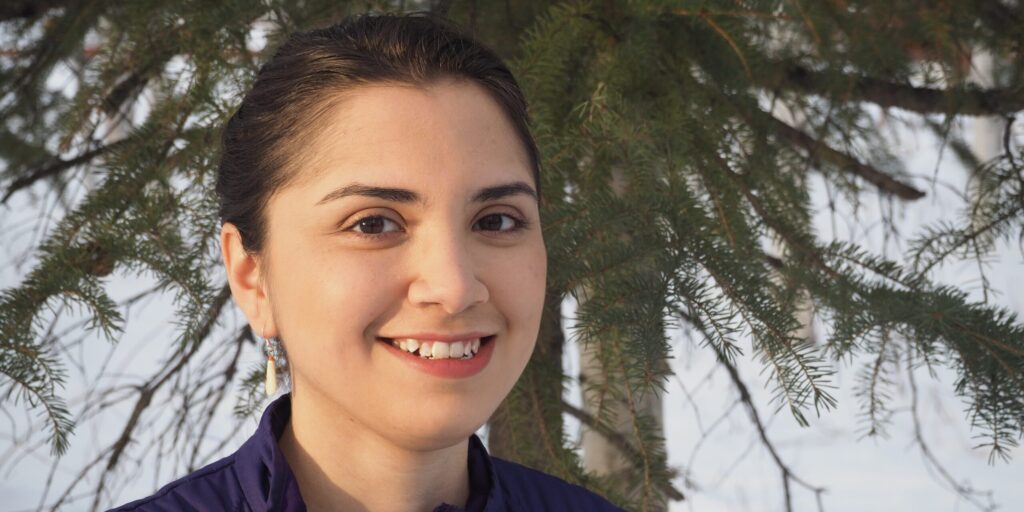It’s now possible to learn basic Inupiaq online, thanks to a graduate student at the University of Alaska–Fairbanks.
Chelsey Qaġġun Zibell is a master’s candidate and adjunct faculty at UAF’s School of Education. As part of a graduate fellowship this summer, she created a free website that teaches users the beginning grammar and vocabulary of the Native Alaskan language.
Zibell, originally from Noorvik, says she has a strong interest in learning languages herself. She’s studied Inupiaq, German, and others. But that wasn’t the only thing motivating her to pursue the project:
“But I also am very aware of the fact that the number of fluent speakers of the Inupiaq language is dwindling, and if we aren’t constantly pushing these revitalization efforts, then this language and other Alaska Native languages could be gone very soon.”
The Alaska Native Language Center at UAF estimates that only around 2,100 people still speak Inupiaq. That’s fewer than 15 percent of the total Inupiat population. Zibell says her project started as an attempt to make the standard textbook on Inupiaq more accessible:
“It is a very, very thorough textbook. It’s got a lot of really good information. But some of that information is very heavy in linguistic terminology and the linguistic aspects of the language. And that can actually be kind of a stumbling point for some learners who don’t necessarily want to know or need to know the linguistic background.”
The UAF website keeps things simple, offering a series of brief lessons without too much jargon. For visual learners, Zibell says there are also interactive games and exercises:
“For instance, there’s a picture of a parka, and it’s got these hotspots on it. They’re purple, and they’ve got these white plus signs, and if you click on them, another image will pop up, and it’ll say a little bit about them in the Inupiaq language.”
Besides the way the information is presented, Zibell says users also have flexibility with the order they learn it. They can choose to go through each lesson sequentially or jump to later lessons if they feel more confident or just want to refresh their memory.
Zibell says she’s only in the beginning stages of building the curriculum and hopes to resume work on expanding the website in the spring. She says the process is boosting her own fluency in the language:
“I’m still at the stage where I think in English, and if someone speaks to me in Inupiaq, in my head I translate what they said to me into English, and then I think about what I want to say back to them in English, and then I try to translate in my own head. And it’s a slow process. I’m still working on thinking in Inupiaq when I’m having a conversation in Inupiaq.”
For others working through similar challenges, she says it’s important just to keep at it:
“Even if you feel like you haven’t learned enough, like if you’re still a beginning learner or an intermediate learner, or if you just have gaps in the knowledge of your language, just have the confidence to pass that on and also to just make it an everyday part of your life.”
Zibell’s website should now make it easier to build that confidence. You can find it at inupiatlanguage.community.uaf.edu.
Photo at top: Chelsey Qaġġun Zibell is a master’s candidate and adjunct faculty member at UAF’s School of Education. She’s originally from Norvik and grew up hearing Inupiaq. (Photo courtesy of Chelsey Qaġġun Zibell.)







